CREDIT goes to DAHM for creating the original thread:
http://miairsoft.proboards.com/thread/36620/pics-guide-great-pictures-kitI wanted to post up this short guide to taking better pictures of your kit, because I believe that being able to present images well on the internet is a skill not many people possess, and its really not
that hard to do! There are just a few basic principals that you need to follow, as well as a handful of simple techniques you can implement in order to get a sharp, focused, and well lit photo. I realize there are other guides out there on MIA which can give you more information on how to work your camera to your advantage and frame good photographs, but I'm here really to focus on what you want - taking pictures of your kit!
The first step we're going to start with is set up. Set up is important because it allows you to frame your pictures properly, and framing is a bigger deal than people think. An ideal set up is one where you can place your kit on a neutral background that doesn't implement a repeating pattern. Also, your set where you place your kit should ideally be clean and uncluttered. Therefore, to create your set, whether it be a floor or a counter top, or even a bed or desk, [color color="Orange"]you need to start by cleaning up the area[/color]. Once you've cleaned everything, you need to look through your camera (or if you have a non-DSLR like most, just look at the screen) and make sure you have a large enough space to take pictures without other stuff getting in the frame. [color color="Orange"]This means clearing a sufficiently larger space than your kit takes up[/color]. Once you have large, clean space with a neutral backdrop to take pictures in you can move to the next step.
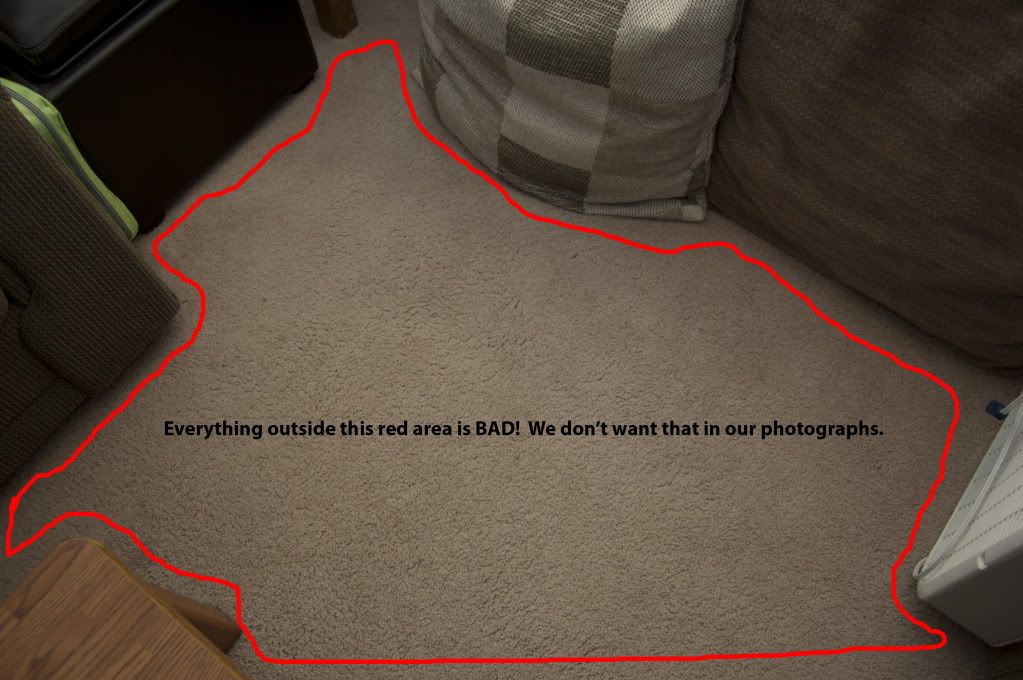
Alright, now you're ready to place your kit on your backdrop and set up for the shots. Place your subject in your set, and step back. Walk around and look for the best angles to take the shots.
Don't zoom in so much that your subject is cut off by the frame! The entire subject needs to be in the frame. If your subject is only part of your kit, then make sure that subject is in the frame, etc. If you're placing your kit on the floor, its probably
not good to just stand there and take the shot from eye level. This usually leads to a boring photograph. Get those angles that you can't normally see (such as from an elevated point of view - and
[color color="Orange"]NO FEET[/color]). [color color="Orange"]
Don't be a photographer of opportunity![/color] You need to put the effort in to capture the good shots. That means grabbing a chair, a stool, or getting down on your knees and elbows to get the correct angles. Once you've found a few good angles to take your shots that lead to interesting images, double check and make sure you aren't going to take pictures of anything else that shouldn't be there. If there are edges of tables, a plate, half of the cover of your porno magazine in the frame - get them out! Those kinds of objects lead eyes away from your subject, and that's bad.
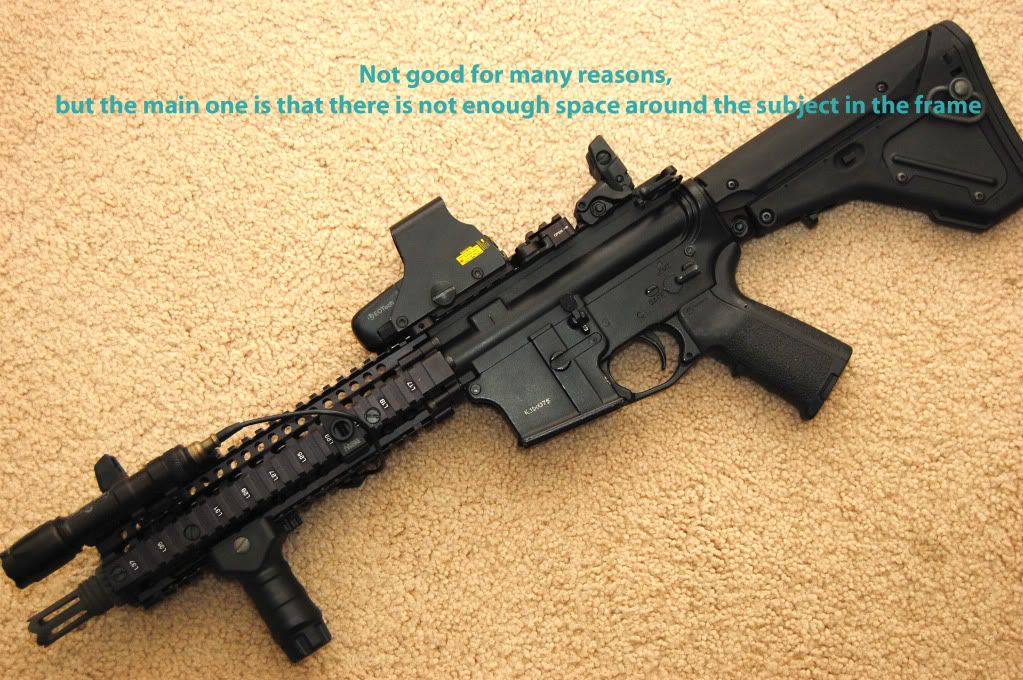
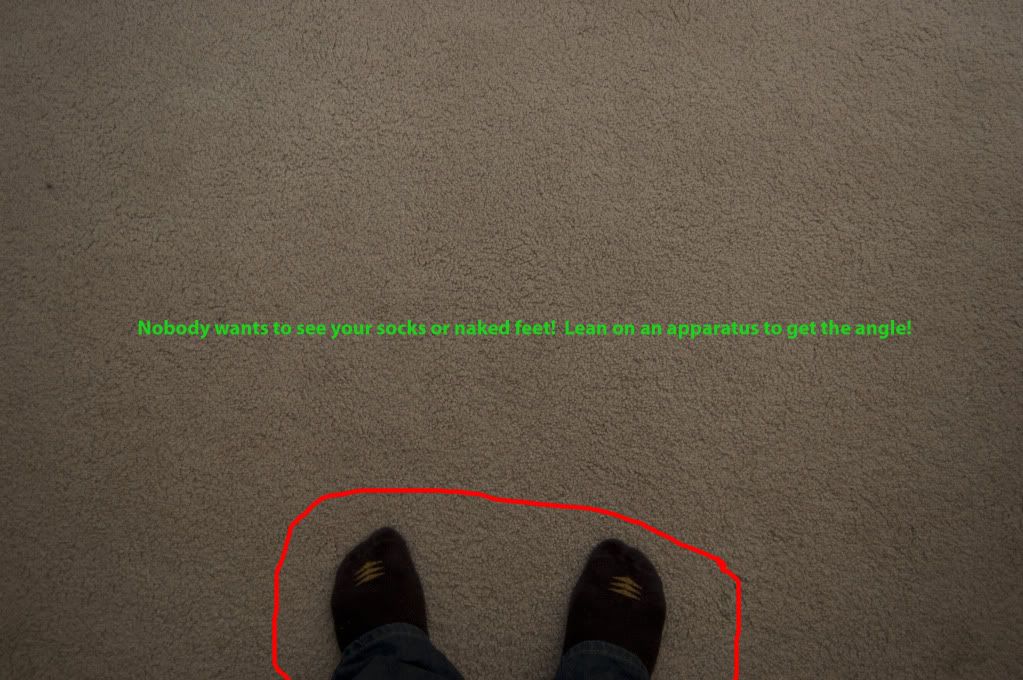
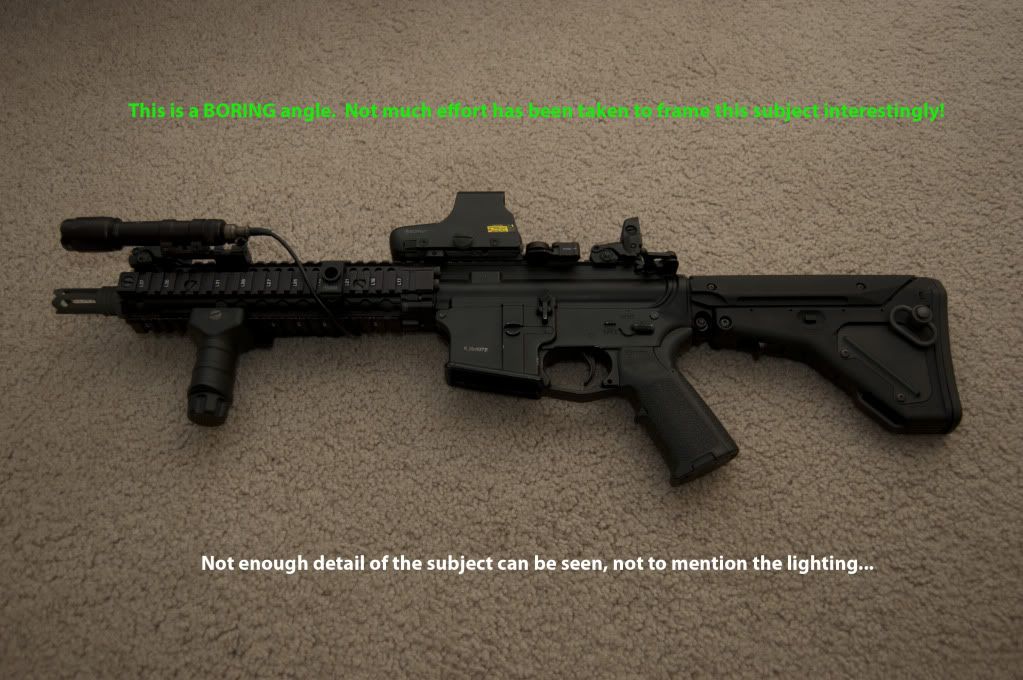
The next thing that needs to be addressed is lighting. Lighting is important to properly view your subject. The problem for most people is a combination of a few things. Firstly, you might find that if you use your digital camera flash to get proper lighting, it will be too strong and make your subject look dull or too bright. Secondly, you might turn off the flash but then have a blurry image because your shutter stays open too long. What I'm going to teach you about here is
[color color="Orange"]bounce flash[/color]. You can use something as simple as a white sheet of paper to bounce your flash light up towards the ceiling as varying angles in order to obtain the correct amount of light transmittance onto your subject. It avoids creating hot zones of flash, and creates an even tonal balance. Another tip is to turn on as much ambient lighting as you can. Don't shine extra lights on your subject from non-discreet locations. This will create shadows. Only use large overhead lighting. Learning this skill will really boost the quality of your pictures.
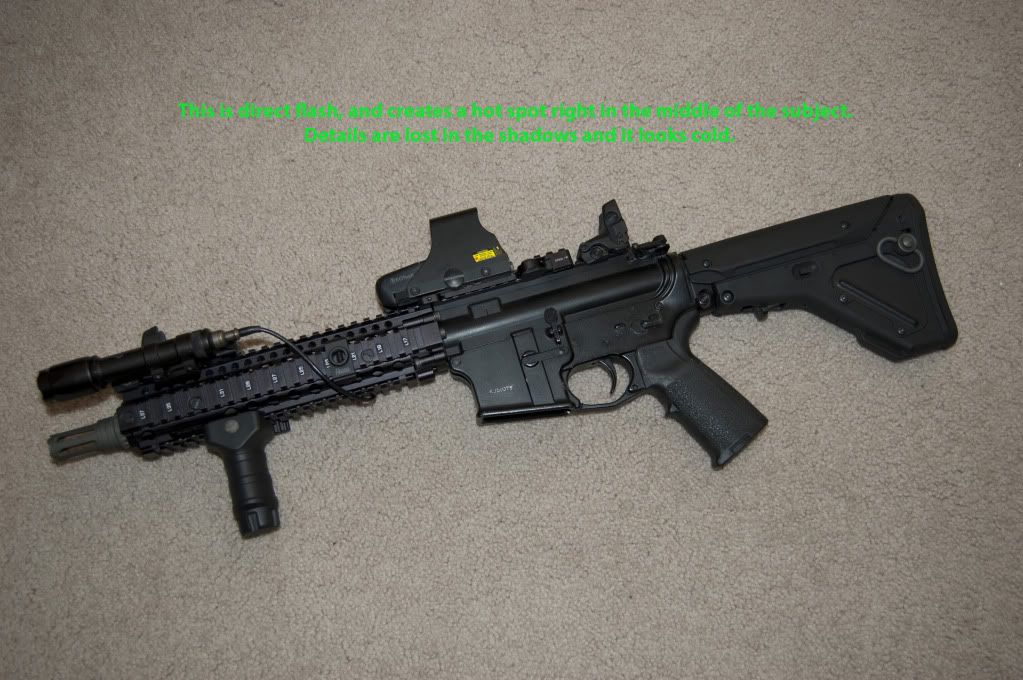
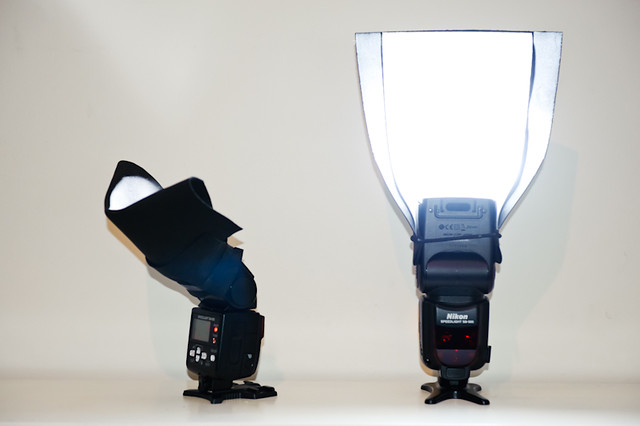
^ You can make something like this with paper to get a bounce flash effect ^
Once you've gotten the set, the angles, and the lighting down, its time to start taking the shots. Make sure you have enough light getting into your lens from the angle you are at to get a shutter speed of
at least 1/60th of a second. This is the general rule of thumb for handheld photography. If you're shutter speed is slower than that, grab a tripod or
anything you can find to stabilize your shot. Blurry images are not pleasing to the eye. Also, maximize your cameras capture settings so the photos you take are nice and large. You can make them smaller in post-processing. If your camera supports RAW format and you have a program like Photoshop, take the pictures in RAW. It leads to tons of flexibility in post-processing. Also, take multiple images. Your memory card holds a lot of images for a reason. Take 5 or 10 of the same angle so you can choose the best one once your done. Even though the set up is the same, they won't be the same.
You want the best chance of getting the golden shot. 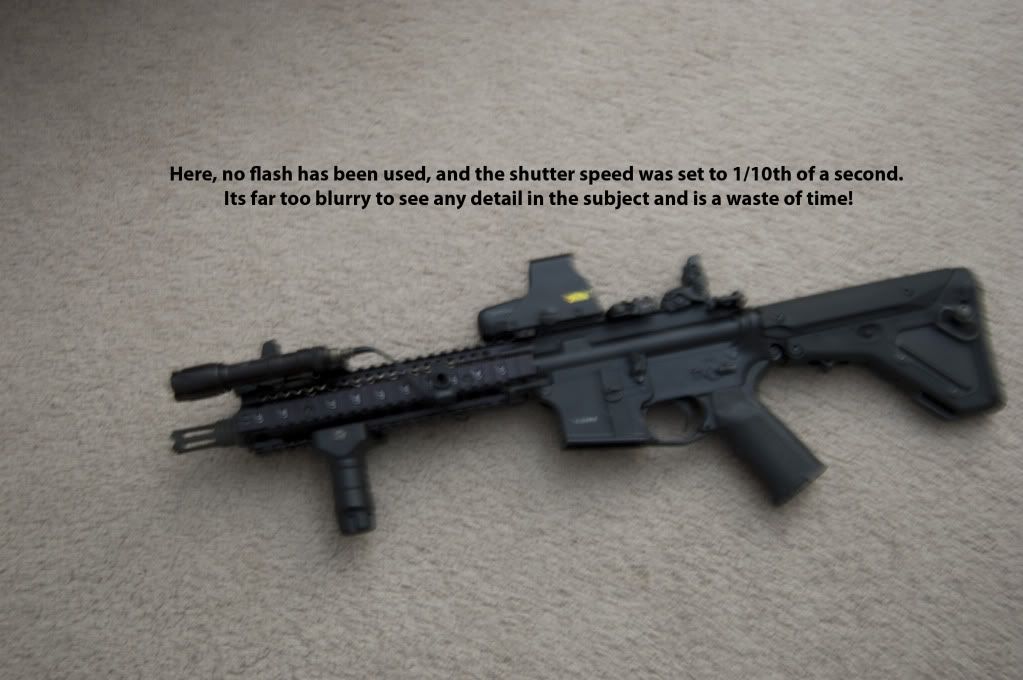

Now that you've followed all of these steps, you should have a nicely lit, uncluttered, and eye-pleasing picture(s) of your kit! From here, you can edit your images with post-processing software like Photoshop, but you don't have to. If you do choose to use a program like Photoshop to edit your pictures, I have a few tips as well. Setting the white balance correctly change change the temperature of your picture so pay attention to that. Also, play with the
Exposure, Recovery, Black level, Fill Light, and Brightness settings. Turning contrast down will give your photographs a nice even look. Basically the colors will match more. However, if you do the opposite, you'll get a lot of contrast between different shades which might be conducive to the style of photograph you are trying to present.
This is an example of a shot I took yesterday and posted on the boards. It utilizes all the techniques I've discussed here.
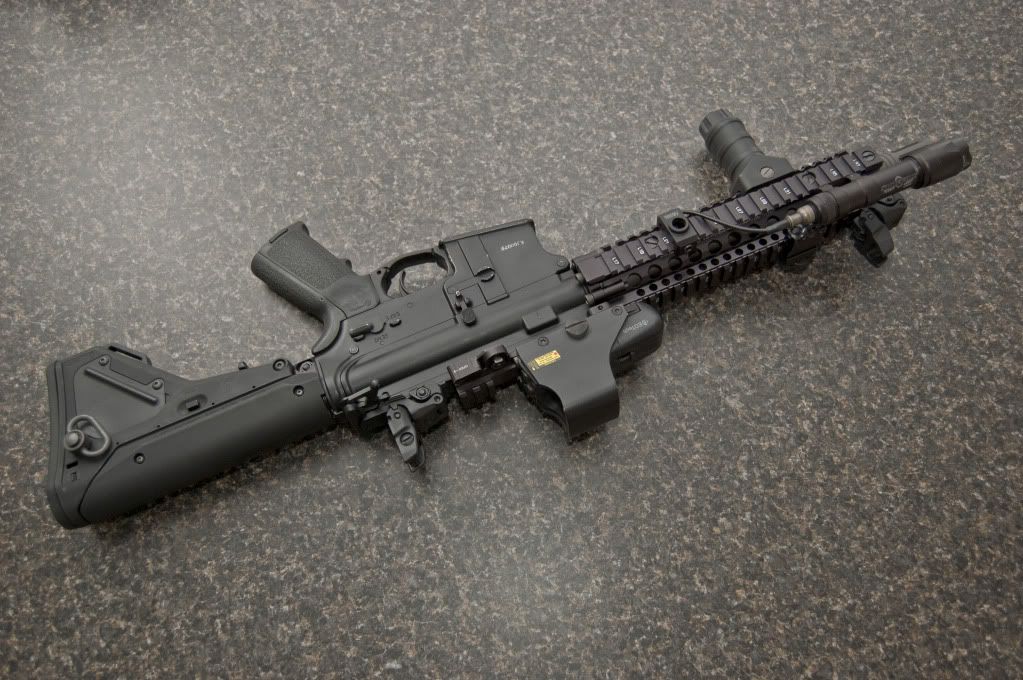
I hope everyone here learned something by reading this, and please feel free to comment if you want me to add something.